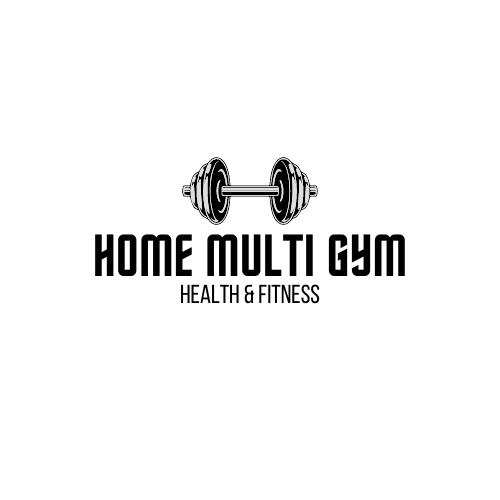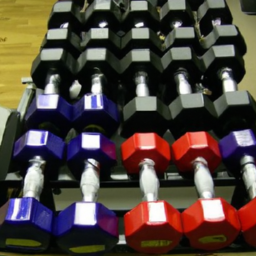Are you considering purchasing a home multi-gym but wondering if you’ll be able to upgrade or add new attachments in the future? It’s a valid question, and one that many people have when investing in fitness equipment. In this article, we’ll explore whether or not you have the flexibility to customize and expand your home multi-gym over time.
If you’re worried about being stuck with the same routine and limited exercise options, don’t fret! We’ll delve into the different types of home multi-gyms and their compatibility with additional attachments. Whether you’re looking to increase resistance, target specific muscle groups, or add variety to your workouts, we’ll provide you with the information you need to make an informed decision. So, stay tuned to learn more about upgrading and adding new attachments to a home multi-gym over time!
Understanding Home Multi-gyms
A home multi-gym is a versatile fitness equipment that allows you to perform various exercises in the comfort of your own home. It typically consists of a steel frame, cables, pulleys, and weight stacks. Unlike traditional home gyms, which are designed for specific exercises, a home multi-gym offers a wide range of exercises targeting different muscle groups.
What is a home multi-gym?
A home multi-gym is a compact all-in-one fitness equipment that provides a complete workout solution. It is designed to mimic the functionality and versatility of a commercial gym, but on a smaller scale. With a home multi-gym, you can perform exercises such as chest press, lat pulldown, leg extension, and many more without the need for multiple machines.
Different types of home multi-gyms
There are several types of home multi-gyms available in the market, each offering different features and functionalities. Some common types include:
-
Traditional multi-gyms: These are the most basic type of home multi-gyms, consisting of a steel frame, weight stacks, and a variety of attachments for different exercises.
-
Power rod multi-gyms: These use power rods instead of weight stacks to provide resistance. Power rods are flexible rods that bend and stretch to create resistance.
-
Plate-loaded multi-gyms: These require weight plates to be loaded onto the machine manually. They offer more customization options and allow for heavier weightlifting.
-
Cable-based multi-gyms: These use cable and pulley systems to provide resistance. They offer a wide range of exercises and are known for their smooth and natural motion.
Benefits of a Home Multi-gym
A home multi-gym offers several benefits compared to other forms of exercise equipment or gym memberships. Some of the key benefits include:
Convenience and accessibility
One of the major benefits of a home multi-gym is the convenience and accessibility it provides. With a home multi-gym, you can work out whenever you want, without having to travel to a gym. This is especially beneficial for those with busy schedules or those who prefer to exercise at odd hours.
Versatility and variety of exercises
Another advantage of a home multi-gym is the versatility it offers. You can perform a wide range of exercises targeting different muscle groups, allowing for a comprehensive full-body workout. Whether you want to build strength, increase muscle mass, or improve your overall fitness, a home multi-gym allows you to do so with ease.
Cost-effective in the long run
While the initial cost of a home multi-gym may seem expensive, it can be a cost-effective investment in the long run. With a multi-gym, you don’t have to spend money on a gym membership or purchase multiple pieces of exercise equipment. Over time, the cost of a home multi-gym is likely to be lower compared to the expenses of a gym membership or purchasing individual exercise machines.
Components and Attachments
To understand the possibility of upgrading or adding new attachments to a home multi-gym, it is important to know the basic components and common attachments found in these machines.
Basic components of a home multi-gym
A home multi-gym typically consists of the following basic components:
-
Steel frame: The frame provides stability and support for the various attachments and weight stacks.
-
Weight stacks: These are blocks of weights that can be adjusted to provide different levels of resistance for each exercise.
-
Cables and pulleys: These components allow for smooth and controlled movement during exercises.
-
Seats and backrests: These provide comfort and support during exercises that require sitting or lying down.
Common attachments in a home multi-gym
Home multi-gyms often come with a variety of attachments designed to target specific muscle groups. Some common attachments include:
-
Chest press: This attachment allows you to perform exercises that target the chest muscles, such as bench press or chest fly.
-
Lat pulldown: The lat pulldown attachment enables you to work on your back and shoulder muscles by mimicking the movement of a pulldown exercise.
-
Leg extension: This attachment focuses on the muscles in your legs, allowing you to perform exercises such as leg extensions or hamstring curls.
-
Arm curl: The arm curl attachment targets the biceps muscles, enabling you to perform exercises like bicep curls.
Compatibility and Upgrades
When it comes to upgrading or adding new attachments to a home multi-gym, it is important to consider compatibility and manufacturer recommendations. Not all home multi-gyms are designed to accommodate additional attachments, so it is crucial to check the compatibility before making any upgrades.
Factors to consider for compatibility
Some factors to consider when determining compatibility for upgrades include:
-
Frame design and dimensions: The frame of the multi-gym should have enough space and the necessary attachment points to accommodate new attachments.
-
Weight stack capacity: The weight stacks should be able to handle the additional weight of the new attachments without compromising safety or functionality.
-
Cable and pulley system: The existing cable and pulley system should be able to accommodate the new attachments without causing any issues with movement or range of motion.
Manufacturer recommendations for upgrades
It is always advisable to consult the manufacturer or supplier for their recommendations on upgrades. They will be able to provide accurate information about the compatibility of specific attachments with your home multi-gym model. Following their recommendations will ensure that any upgrades or additions are safe and do not void any warranties.
Adding Attachments to a Home Multi-gym
Adding new attachments to a home multi-gym can be a relatively straightforward process. Most home multi-gyms come with user manuals or instructional guides that provide step-by-step instructions on how to attach and use various accessories.
Process of adding new attachments
The process generally involves the following steps:
-
Identify the desired attachment: Determine the specific attachment you want to add based on your fitness goals and exercises you want to perform.
-
Refer to the user manual: Consult the user manual or instructional guide provided with your home multi-gym to locate the attachment points and understand the correct installation procedure.
-
Install the attachment: Follow the instructions provided in the user manual to install the attachment securely. Ensure that all connections are tightened properly to prevent any accidents or injuries.
Benefits of adding attachments over time
Adding attachments to your home multi-gym over time can greatly enhance your workout experience. It allows you to diversify your exercises and target different muscle groups more effectively. By gradually adding attachments, you can gradually progress and challenge your body as you become more comfortable with your current workout routine.
Maintenance and Safety
To ensure the longevity and safe use of your home multi-gym, regular maintenance practices and safety precautions should be followed.
Regular maintenance practices
Regular maintenance of your home multi-gym is essential to keep it in optimal condition. Some maintenance practices to consider include:
-
Cleaning: Regularly clean the attachments, weight stacks, and frame of your home multi-gym to remove dust, sweat, or any debris. This helps prevent the buildup of dirt and ensures smooth and safe operation.
-
Lubrication: Periodically lubricate the moving parts, such as pulleys and cables, to maintain smooth and efficient movement.
-
Inspection: Regularly inspect your home multi-gym for any signs of wear and tear, loose or damaged parts, or any potential safety hazards. Address any issues promptly to ensure safe operation.
Ensuring safety during attachment upgrades
When adding new attachments, it is important to prioritize safety. Follow these safety precautions to prevent accidents or injuries during the upgrade process:
-
Read the instructions: Carefully read and understand the instructions provided in the user manual or instructional guide before attempting to attach any new accessories.
-
Use proper tools: Use the appropriate tools and equipment as recommended in the user manual for attaching the new accessories. Using improper tools can damage the machine or compromise safety.
-
Seek assistance if needed: If you are unsure about the attachment process or encounter any difficulties, seek assistance from a professional or contact the manufacturer for guidance.
Consulting with Professionals
When it comes to making upgrades or adding attachments to your home multi-gym, it is beneficial to seek advice from fitness experts or consult the manufacturer or supplier.
Seeking advice from fitness experts
Fitness experts, such as personal trainers or strength and conditioning specialists, can provide valuable insights and recommendations based on your specific fitness goals and needs. They can help you determine which attachments or upgrades would be most beneficial for your workout routine.
Consulting manufacturers or suppliers
Manufacturers or suppliers of home multi-gyms are knowledgeable about their products and can provide expert advice on compatibility and suitable attachments. They can guide you in choosing the right accessories and provide valuable insights on upgrading your home multi-gym.
Alternatives to Upgrades
If upgrading or adding attachments to your home multi-gym does not seem feasible or suitable, there are alternative fitness options to consider.
Exploring alternative fitness options
If you feel limited by your home multi-gym or want to explore different types of exercises, you can consider incorporating other forms of exercise into your routine. Options may include bodyweight exercises, cardio exercises, yoga, or pilates. These alternatives can provide variety and help you achieve your fitness goals without the need for additional attachments.
Considering new home multi-gym models
If your current home multi-gym does not meet your evolving fitness needs, you can consider purchasing a new model that offers more advanced features or attachments. Upgrading to a new home multi-gym may provide a fresh workout experience and better cater to your specific fitness goals.
Budgeting for Upgrades
When considering upgrades or adding attachments to your home multi-gym, it is important to plan and manage your budget effectively.
Planning and managing budget for upgrades
Before making any upgrades, assess your budget and determine how much you are willing to spend. Research the costs of different attachments or new home multi-gym models to gauge the feasibility of your upgrade plans. Set a budget and prioritize your upgrades based on your fitness goals and the affordability of each option.
Cost comparison of individual attachments vs. new multi-gym
When deciding between upgrading individual attachments or purchasing a new home multi-gym, it is important to consider the cost implications. Compare the cost of individual attachments to the price of a new multi-gym that already includes those features. Make a cost-effective decision based on your budget and long-term fitness goals.
Conclusion
In conclusion, a home multi-gym offers a convenient and versatile way to achieve your fitness goals. While the possibility of upgrading or adding attachments to a home multi-gym depends on compatibility and manufacturer recommendations, it is a feasible option for enhancing your workout routine. By following proper maintenance practices, ensuring safety during upgrades, and seeking advice from professionals, you can maximize the benefits of your home multi-gym. Consider alternative fitness options and budget effectively for upgrades to adapt your home multi-gym to your evolving fitness needs over time. Embrace the flexibility and adaptability of your home multi-gym, and explore upgrade options that can enhance your workout experience and help you achieve your fitness goals.

